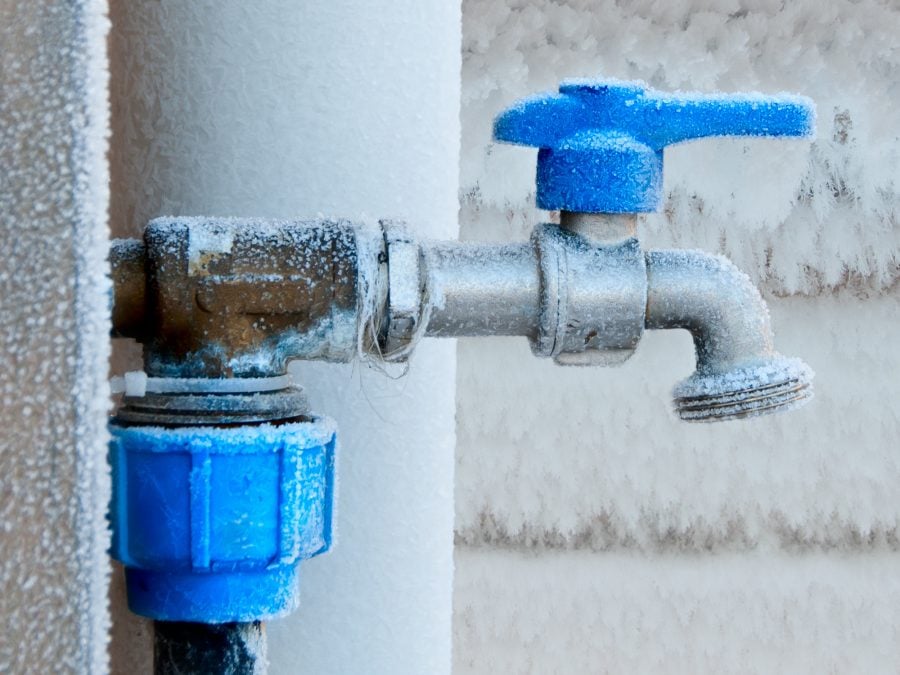Preventing Frozen Pipes in Cold Weather: Expert Advice
Preventing Frozen Pipes in Cold Weather: Expert Advice
Blog Article
Do you find yourself looking for answers about 6 Ways to Prevent Frozen Pipes?

Cold weather can wreak havoc on your pipes, specifically by freezing pipes. Here's exactly how to avoid it from taking place and what to do if it does.
Intro
As temperature levels decrease, the threat of frozen pipes increases, possibly causing pricey repair services and water damage. Understanding exactly how to avoid frozen pipes is vital for property owners in cold climates.
Understanding Frozen Pipelines
What causes pipes to freeze?
Pipelines freeze when revealed to temperatures listed below 32 ° F (0 ° C) for prolonged durations. As water inside the pipelines freezes, it broadens, taxing the pipe wall surfaces and possibly triggering them to rupture.
Dangers and problems
Icy pipelines can result in supply of water interruptions, property damage, and expensive fixings. Burst pipelines can flood homes and cause comprehensive architectural damage.
Signs of Frozen Pipes
Identifying icy pipes early can prevent them from breaking.
Exactly how to determine frozen pipelines
Search for lowered water flow from taps, unusual smells or noises from pipelines, and noticeable frost on revealed pipes.
Avoidance Tips
Insulating prone pipelines
Wrap pipelines in insulation sleeves or make use of heat tape to protect them from freezing temperatures. Concentrate on pipelines in unheated or exterior areas of the home.
Home heating strategies
Maintain interior spaces appropriately heated, particularly locations with pipes. Open up closet doors to permit warm air to circulate around pipes under sinks.
Safeguarding Exterior Pipes
Yard pipes and exterior taps
Detach and drain garden hose pipes before winter. Set up frost-proof spigots or cover exterior faucets with shielded caps.
What to Do If Your Pipes Freeze
Immediate activities to take
If you think icy pipes, maintain faucets open up to ease stress as the ice melts. Make use of a hairdryer or towels soaked in hot water to thaw pipelines slowly.
Long-Term Solutions
Structural changes
Consider rerouting pipelines away from exterior wall surfaces or unheated areas. Include added insulation to attics, basements, and crawl spaces.
Upgrading insulation
Buy top notch insulation for pipelines, attic rooms, and walls. Correct insulation helps keep consistent temperatures and minimizes the risk of frozen pipes.
Conclusion
Protecting against icy pipes requires positive procedures and fast responses. By comprehending the causes, indications, and preventive measures, house owners can secure their pipes throughout cold weather.
6 Proven Ways to Prevent Frozen Pipes and Protect Your Home
Disconnect and Drain Garden Hoses
Before winter arrives, start by disconnecting your garden hoses and draining any remaining water. Close the shut-off valves that supply outdoor hose bibs and leave the outdoor faucet open to allow any residual water to drain. For extra protection, consider using faucet covers throughout the colder months. It’s also important to drain water from any sprinkler supply lines following the manufacturer’s directions.
Insulate Exposed Pipes
Insulating your pipes is an effective way to prevent freezing. Pipe insulation is readily available at home improvement stores and is relatively inexpensive. Pay close attention to pipes in unheated areas such as the attic, basement, crawl spaces, or garage. Apply foam insulation generously to create a buffer against the cold. You can also wrap your pipes in heat tape or thermostat-controlled heat cables for added warmth.
Seal Air Leaks
Inspect your home for any cracks or openings that could let in cold air. Seal any holes around the piping in interior or exterior walls, as well as the sill plates where your home rests on its foundation. Additionally, make sure to keep your garage door closed unless you’re entering or exiting. Leaving it open creates a significant air leak that can lead to frozen pipes.
Allow Warm Air Circulation
During cold snaps, it’s essential to allow warm air to circulate evenly throughout your home. Leave interior doors ajar to promote better airflow. Open kitchen and bathroom cabinets to help distribute heat consistently around the rooms. If you have small children or pets, be sure to remove any household chemicals or potentially harmful cleaners from open cabinets for safety.
Let Faucets Drip
A small trickle of water can make a big difference in preventing ice formation inside your pipes. When temperatures drop significantly, start a drip of water from all faucets served by exposed pipes. This continuous flow helps prevent the water from freezing. Additionally, running a few faucets slightly can relieve pressure inside the pipes, reducing the chances of a rupture if the water inside does freeze.
https://choateshvac.com/6-proven-ways-to-prevent-frozen-pipes-and-protect-your-home/
:strip_icc()/snow-outdoor-faucet-pipes-4af65d1e5e904fb1aa7bf74071fe5d89.jpg)
Do you like reading up on How To Avoid Freezing Pipes? Make feedback below. We'd be delighted to hear your views about this article. Hoping that you visit us again soon. Are you aware of anybody else who is fascinated with the topic? Please feel free to share it. Thank you for being here. Kindly come by our site back soon.
Call Today Report this page